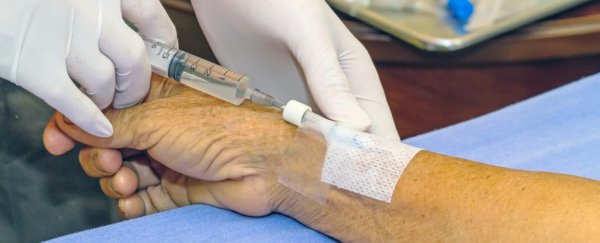In a world first, bioengineers have used human cells to create the common drug heparin, a lifesaving blood-thinner.
This is a big deal, because right now, heparin is created using animal tissue, which can be contaminated and can cause severe adverse reactions. The possibility of using human cells instead – from a genetically engineered human cell line – will make the drug safer, more effective, and keep animals out of the process.
"Heparin is used worldwide. It's currently an [US]$8 billion market and its use is only increasing," says Megan Lord, one of the researchers from the University of New South Wales Faculty of Engineering (UNSW Engineering), in Australia.
Heparin is commonly used to prevent blood clots when a patient is undergoing surgery or dialysis.
It's estimated that 12 million patients every year in the US receive heparin, and that demand is only going up – the industry is set to double in the next 10 years.
It's also on the World Health Organisation's list of essential medicines, so finding a way to produce it more safely is a big deal..
"It was actually a serendipitous finding," Lord said. "We didn't set out to make heparin in the laboratory. The discovery was through a fundamental project focused on understanding how inflammatory cells are involved in wound healing."
But once they had the basics, the team was able to bioengineer heparin (a carbohydrate) by using human cells as a 'bioreactor' – or tiny biological factory for the drug.
The human cells, called HMC-1, are a type of lab-cultured immune cell, and were genetically edited to produce excess amounts of heparin, which the researchers could then extract.
This means the source of heparin going forward could be based entirely on human cells grown from scratch in the lab, rather than from cell samples taken from animal subjects.
"With our method, we've shown, for the first time, an alternative and much safer method to producing heparin by using bioreactors to culture cells to produce the carbohydrate drug," explains Lord.
"Now we've demonstrated producing heparin in lab scale production, the next stage is to refine the bioreactor conditions to increase the amount and potency of the heparin we produce."
But, as with most biological discoveries, we won't be seeing this new improved version on the shelf in the near future.
"We hope to have a product on the market within 10 to 15 years," Lord added.
The research has been published in Metabolic Engineering.
UNSW Engineering is a sponsor of ScienceAlert. Find out more about how they're solving the world's problems.
